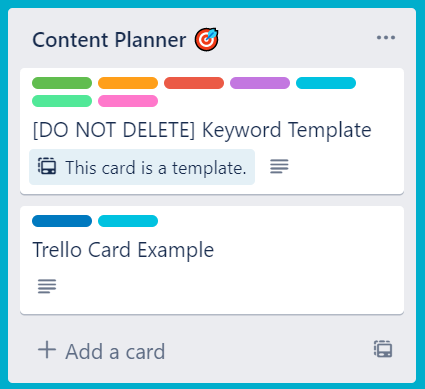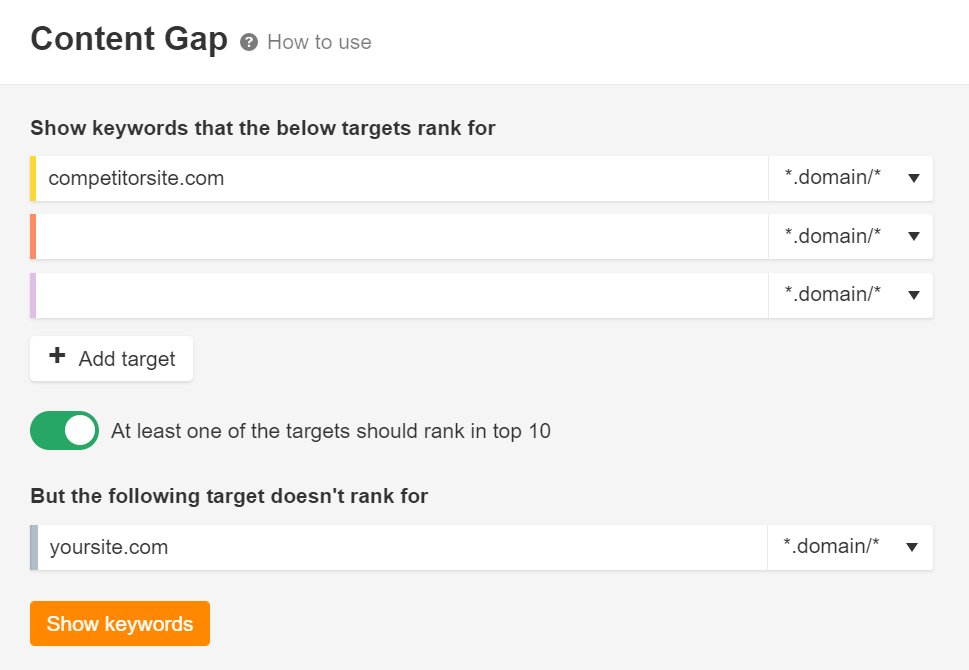- Home
- Blog
- Content Marketing Content Strategy Insights From a WebFX Content Strategist
Content Strategy Insights From a WebFX Content Strategist
-
 Published: Jul 1, 2022
Published: Jul 1, 2022
-
 8 min. read
8 min. read
-
 Emily Carter, M.S.
Emily Carter, M.S. Content Delivery Lead
Content Delivery Lead
- Emily is WebFX’s Content Delivery Lead. She holds an M.S. in digital marketing and leads the FX content team, along with strategy, implementation, and evaluation for WebFX’s key revenue channels. Her work has been featured by Social Media Today, Campaign Monitor, Reader’s Digest, Yahoo, and more. In her free time, she enjoys hiking, road trips, and exploring new cities. Follow her on Twitter @emcarter16 or connect on LinkedIn. @emcarter16
Without a strong foundation, your house would sink into the ground, resulting in nightmarish damage.
Similarly, if you try to create content without a solid strategy, your pages will crumble. You won’t stand a chance of ranking in search results and reaching your audience.
Your content strategy lays the foundation for successful content marketing — and it’s essential if you want to reach and convert more customers.
In this guide to content marketing strategy, we’ll cover content strategy basics and how to create a content strategy that supports your business goals.
Just keep reading or connect with our content marketing experts to learn more!
Content strategy basics
First things first — let’s cover some content strategy basics.
What is content strategy?
A content strategy sets the overarching vision and goals powering your content creation. It involves high-level planning, developing, and managing content marketing materials across many channels.
Depending on your business goals, your content strategy may include content on traditional marketing channels like billboards, TV, and radio ads. Or, your content strategy may harness digital channels, like your website, emails, and social media, to drive results. In this post, we’ll focus on digital content.
A content strategy plan includes three basic pillars:
Let’s break down each pillar.
Content planning
When planning your content strategy, you’ll want to think about:
- Who: Writers, editors, designers, and publishers
- What: Topics and types of content
- When: Timeline for launch
- Where: Content channels
- How: Expectations for content creation
Ultimately, your content strategy will distill business goals into an actionable plan for creating and launching content.
Content creation and management
After creating your content plan, you can start developing content.
Depending on the size of your team and the scope of content projects, you’ll want to use a project management system like Trello or Asana to aid with creating content.

Your content will go back and forth between writers, editors, and publishers before making its way to the final destinations. So, you’ll need an organized system for mapping content creation.
Content reporting
Finally, a successful content strategy isn’t complete without reporting.
Measuring and evaluating your content efforts will allow you to determine which channels, topics, and types of content contribute most to your end goals.
You might find that your audience prefers blog posts, or maybe you attract more leads with in-depth guides.
Tools like Google Analytics, Google Search Console, and MarketingCloudFX allow you to quantify content results and better inform your strategy (and budget) in the future.
How to develop a content strategy
Now that we covered what content strategy is, here are nine steps for creating your content strategy.
- Develop your brand style guide
- Define your content goals
- Assemble your content team
- Audit content and look for opportunities
- Create your content plan and calendar
- Manage and launch your content
- Promote your content
- Measure content results
- Re-optimize existing content
Let’s look at each step.
1. Develop your brand style guide
Before you can start writing, you’ll need to create your brand style guide. A style guide outlines everything your content team needs to know to create consistent messaging across content channels.
Here are just a few items you can include in your brand style guide:
- Company mission and vision
- Target audience
- Brand personality and tone
- Copywriting guidelines
- Calls to action (CTAs) and unique selling points (USPs)
- Multimedia guidelines
- Color palette and logos
- Publishing instructions
Once you create your style guide, make sure to house it in a central location, so everyone involved in your content process can easily reference it.
2. Define your content goals
Next, it’s time to define your content goals. Try to make your goals S.M.A.R.T. and make sure they relate to bottom-line results.
Use tools like Google Analytics and Google Search Console to gauge historic content performance. From there, you can establish benchmarks and realistic goals for your content.
For example, you may want to increase organic leads from content created in Q1 by 15%.
You can then create objectives — like creating and launching 50 new blog posts — to help you achieve your content marketing goals.
3. Assemble your content team
You’ll also need to establish your star-studded content team, which may consist of:
- Content strategists
- Writers
- Editors
- Publishers
- Optimizers
Specific content roles will vary depending on your business and goals — and you can scale up your team to support output goals.
4. Audit content and look for opportunities
We’re getting closer — but it’s not time to start writing yet.
Next, you’ll want to audit existing content and look at competitor websites to uncover valuable opportunities and identify content gaps.
Tools like Ahrefs’ Content Gap are great for identifying content opportunities you may have otherwise missed.

Depending on the scope of your project, content audits can seem daunting. If that’s the case, WebFX can help.
Our team of experts leverages our suite of MarketingCloudFX tools to audit your SEO content and identify the most profitable keyword opportunities.
5. Create your content plan and calendar
Time to create your content plan.
Your content plan outlines exactly how you’ll carry out your content strategy. For this step, it’s helpful to create a content calendar that outlines information like:
- Content topics
- Content types
- Notes/outlines
- Due dates
- Writers/editors
- Publishing locations
- And more
It’s a great idea to reference your plan throughout the content creation process to keep your projects on track. You can also plan out your page topics to start building your information architecture.
6. Manage and launch content
Finally, it’s time to assign and create your content!
To keep projects running smoothly, I recommend using project management software like Trello or Asana.
These tools make it easy to see exactly where a piece of content is in the production process. In addition, your content team can keep track of new assignments on their lists to write, edit, publish, and optimize.
You’ll also want to choose a content management system (CMS) like WordPress to help you easily launch website content. Then, you can work on mapping your content across your site and managing internal linking.
With content creation and management tools, you can take your content from rough drafts to live pages on your website.
7. Promote your content
After launching your content, it’s time for promotion.
Depending on your goals, you may choose to share content via your social media platforms or email newsletters.
You might also share your content with reputable sources in your industry in hopes of earning backlinks to your website.
Content promotion is a key step for helping people (and search engines) find your freshly-published content, so make sure you don’t skip this step.
8. Measure content results
Your work isn’t done just yet.
Time to pull out reporting tools, like Google Analytics, to measure content performance.
Think back to your content goals. Did you meet them?
When evaluating content results, try to go beyond vanity metrics. Earning thousands of blog visitors sounds great on paper, but does the traffic convert?
It’s a good idea to relate content performance to bottom-line results like the number of leads and revenue. Remember, though, even if a page doesn’t directly drive conversions, it could still be valuable for boosting top-of-funnel traffic and helping leads start their journeys on your site.
You may also uncover pages on your site that need re-optimized. With a little re-optimization, they may turn into your next big hits.
Evaluating and measuring the impact of your content is essential, and you can use the findings to inform your future content strategy.
9. Re-optimize existing content
It’s also valuable to refresh or re-optimize older website content.
To do this, start by identifying keywords or pages that have the potential to drive big results but aren’t ranking as well as you hoped. You can also update pages that contain outdated information.
Search engines and users love fresh content, so content refresh and re-optimization is a great way to breathe new life into your content strategy while maximizing the value of existing content.
Leverage content marketing to power your digital strategy
You made it to the end of our content strategy guide!
Now, it’s time to harness the power of content marketing on your website to drive higher search rankings and more leads. Need help? Our team has 3,212,407 hours of experience driving results for clients, and we’d love to chat with you.
Check out our content marketing services and contact us online to create your custom content marketing strategy today!
-
 Emily is WebFX’s Content Delivery Lead. She holds an M.S. in digital marketing and leads the FX content team, along with strategy, implementation, and evaluation for WebFX’s key revenue channels. Her work has been featured by Social Media Today, Campaign Monitor, Reader’s Digest, Yahoo, and more. In her free time, she enjoys hiking, road trips, and exploring new cities. Follow her on Twitter @emcarter16 or connect on LinkedIn.@emcarter16
Emily is WebFX’s Content Delivery Lead. She holds an M.S. in digital marketing and leads the FX content team, along with strategy, implementation, and evaluation for WebFX’s key revenue channels. Her work has been featured by Social Media Today, Campaign Monitor, Reader’s Digest, Yahoo, and more. In her free time, she enjoys hiking, road trips, and exploring new cities. Follow her on Twitter @emcarter16 or connect on LinkedIn.@emcarter16 -

WebFX is a full-service marketing agency with 1,100+ client reviews and a 4.9-star rating on Clutch! Find out how our expert team and revenue-accelerating tech can drive results for you! Learn more
Try our free Marketing Calculator
Craft a tailored online marketing strategy! Utilize our free Internet marketing calculator for a custom plan based on your location, reach, timeframe, and budget.
Plan Your Marketing Budget
Table of Contents
- Content Strategy Basics
- What is Content Strategy?
- Content Planning
- Content Creation and Management
- Content Reporting
- How to Develop a Content Strategy
- 1. Develop Your Brand Style Guide
- 2. Define Your Content Goals
- 3. Assemble Your Content Team
- 4. Audit Content and Look for Opportunities
- 5. Create Your Content Plan and Calendar
- 6. Manage and Launch Content
- 7. Promote Your Content
- 8. Measure Content Results
- 9. Re-optimize Existing Content
- Leverage Content Marketing to Power Your Digital Strategy

Looking for More?
Get expert ideas, industry updates, case studies, and more straight to your inbox to help you level up and get ahead.
"*" indicates required fields
Try our free Marketing Calculator
Craft a tailored online marketing strategy! Utilize our free Internet marketing calculator for a custom plan based on your location, reach, timeframe, and budget.
Plan Your Marketing Budget





